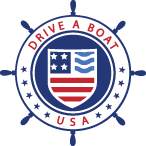Florida Clean Vessel Act, Marine Sanitation and Pumpout Stations
Dumping untreated sewage into the water, particularly in large quantities, can have a detrimental effect on the environment and human health. As more and more recreational boaters make use of Florida’s waterways, the state has had to implement strict sewage disposal laws in order to protect local ecosystems and populations. Find out about Florida’s marine sanitation requirements and the equipment and facilities available to help recreational boaters comply with state law.
Marine sanitation requirements in Florida
According to Florida boating laws, vessels 26 feet or longer that have an enclosed cabin with sleeping accommodations are required to have a toilet on board. The toilet may be portable or permanently installed. Houseboats and floating structures with an enclosed living or working space are required to have a permanently installed toilet.
Permanently installed toilets on vessels must be connected to a US Coast Guard-approved Type III marine sanitation device. Toilet facilities on floating structures may be connected to a Type III device or permanently attached to a sewage disposal system on shore. Portable toilets must be emptied at an approved waste reception facility.
Discharging raw sewage into the water is prohibited in Florida. Any vessel equipped with a toilet or holding tank that can be emptied directly into the water must set the mechanism to prevent any discharge while on state waters. Boating law enforcement officers have the authority to inspect vessels to ensure that they comply with marine sanitation requirements.
Marine sanitation devices
A marine sanitation device (MSD) is a type of equipment installed on a vessel or floating structure to hold and/or treat sewage. There are three categories of MSDs approved by the US Coast Guard: Type I, Type II and Type III.
Type I
Type I MSDs are flow-through devices, meaning that they treat sewage and then discharge it into the water. These devices generally use maceration and chemical disinfection to treat sewage. The resulting effluent will have no floating solids and no more than 1,000 fecal coliform bacteria per 100 ml.
Type II
Type II MSDs are flow-through devices that usually use biological or aerobic digestion to treat sewage. The resulting effluent will have no more than 150 mg of floating solids per L and no more than 200 fecal coliform bacteria per ml.
Type III
Type III MSDs are usually holding tanks that store sewage and prevent it from being discharged into the water. They are designed to be emptied at pumpout facilities. They may also have waste treatment capabilities.
The Clean Vessel Act: boat sewage pumpout stations
All sewage from Type III marine sanitation devices must be disposed of at approved pumpout facilities. To help recreational boaters comply with this requirement, the Clean Vessel Act provides states with ongoing funding to install and operate pumpout stations. Pumpout facilities may be free or cost up to $40 to use, but those funded by the Clean Vessel Act won’t charge more than $5.
Find out more about Florida boating laws with Drive a Boat USA
Marine sanitation requirements are just one aspect of boating law that recreational boaters need to be aware of when operating a vessel in Florida. There’s plenty to learn in order to stay safe on the water and comply with state boating regulations. It’s best to take a boating safety course to ensure that you’re well prepared, and it’s actually a requirement for vessel operators born after Jan. 1, 1988.
Take Drive a Boat USA’s Florida boating safety course online and learn everything you need to know to master the basics of recreational boating!

